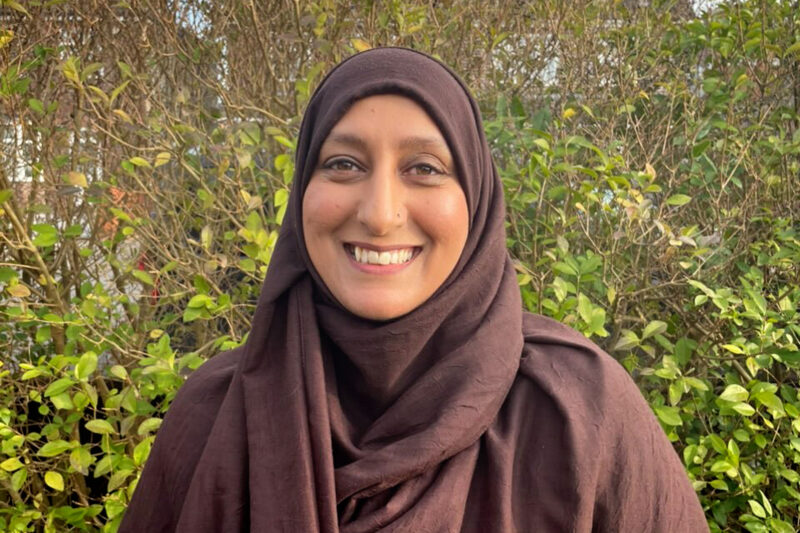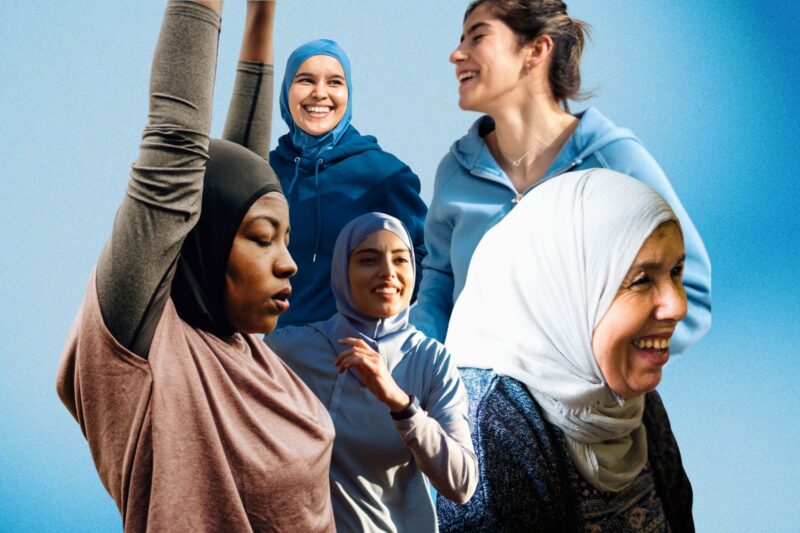Can yoga be halal?

Opinion is divided as to whether practising the ancient discipline is permissible for Muslims, but some teachers are finding their own paths
When Fatima Dambam, 26, from Coventry, launched Zenco, a Muslim-friendly wellness community for women, in May, she didn’t expect that offering yoga would provoke such a strong reaction.
“My sister posted about our first session in a women’s masjid group,” she says. “Immediately, one woman commented, ‘Yoga is haram. Don’t do it, or you’ll be possessed.’”
Dambam’s journey into wellness began during the Covid-19 pandemic, when she took up running. She joined a community named Muslim Runners in 2024, but the group’s lack of diversity — she was often the only Black participant — prompted her to create a more inclusive space.
“I wanted to do something for the girls,” she says. “Especially Black Muslim women. I wanted to encourage more Muslim girls to come out and do sports in a comfortable, safe environment.”
Dambam was initially hesitant to try yoga because of its links to other religious beliefs. But after further research and watching home workouts on YouTube during the pandemic, she realised she could separate the spiritual elements of yoga from the actual exercise.
“Yoga doesn’t have to be linked to any religion,” she says. “When I started looking into it, I realised it’s actually just different movements that allow me to stretch my muscles and body.”
That idea has allowed Dambam to make yoga inclusive for her Muslim participants. Before launching her first class, she had a conversation with the studio where she runs her sessions and asked the instructors to remove any of the prayers, mantras and anything else that contradicted Islam — a request to which she says they were “really receptive”.
Alongside yoga and mat pilates, Dambam plans to offer a range of additional activities, from paddle sessions to hikes. But yoga remains Zenco’s main activity, thanks to its accessibility.
“Not everyone’s a runner,” she says. “Yoga is something anyone at any level can do. You don’t need to be super-athletic and it’s not too strenuous. It also works for all body types.”
The response from attendees has also been overwhelmingly positive.
“They’ve loved that the space was enclosed so they could take off their hijabs,” Dambam says. “But more than anything, they loved the social side, just being with other Muslim girls.”
The question of whether yoga is permissible in Islam brings together centuries-old traditions, interpretations of faith and an increased popularity of wellness practices among Muslims. Rooted in ancient Indian traditions, yoga has evolved globally into a multibillion-dollar industry. But its ties to Hindu and Buddhist philosophies continue to cause debate in Muslim communities.
For Adelah Bilal, 32, a second-generation Muslim yoga teacher, balancing yoga with her faith has been all about intention and adaptation. Her mother, also a yoga instructor, has been teaching it for more than 20 years, concentrating on posture and movement.
“She never saw it as a spiritual practice,” Bilal says. “She teaches it from a non-denominational perspective and specifically focuses her teaching towards Muslim women.”
Bilal’s own yoga journey began after a knee injury in 2013. She went on to complete her teacher training in 2019, becoming one of the few visibly Muslim individuals in the spaces where she teaches. But her training period brought up tension between the practice and her faith.
“I was often the only Black person, the only Muslim, and there was this subtle pressure to detach from my own faith and spirituality,” she says. “Like if you’re serious about yoga, you have to absorb all the philosophies, no questions asked.”
Now, as an instructor, Bilal takes a different approach from what she was taught. She teaches without chanting or mantras, as she says she doesn’t feel connected to them, avoids mudras — spiritual hand gestures — and gives students the option to skip anything that feels uncomfortable.
“Even something as simple as the prayer pose — palms together at the chest — can feel too close to non-Islamic worship for some people, and that’s valid. I always tell students, place your hands wherever they feel comfortable.”
Islamic opinions on yoga remain divided. Some scholars say it is haram, especially when elements such as chanting, mantras or ritual bows are involved. In 2004, Egypt’s highest religious authority banned the practice of yoga, ruling that the practice was in conflict with Islamic teachings. Similarly, in 2008 and 2009, Malaysia and Indonesia, respectively, banned Muslims from practising yoga because of its Hindu origins, stating that doing so might lead to religious confusion.
But others take a more nuanced view, arguing that the physical practice of yoga is allowed as long as it is stripped of religious references and symbolism.
“There are so many different types of yoga,” says Dambam. “It just depends on what type you choose to align yourself with. There’s yoga that’s purely for the movements and the stretches, and then there’s yoga for the spiritual aspects.”
Bilal agrees, though she emphasises the importance of education. “Understand what you’re practising. Ask questions. Know what the Sanskrit terms mean before using them. Respect the tradition, but know your own limits.”
Ultimately, for many Muslim women, yoga is about reclaiming space on their own terms. As Dambam puts it, “For me, yoga is literally just another form of exercise. I don’t connect with it spiritually or religiously. I have Islam for that.”
 Newsletter
Newsletter










